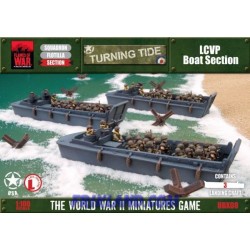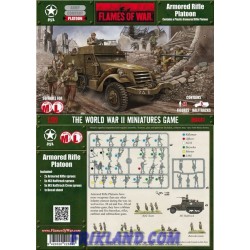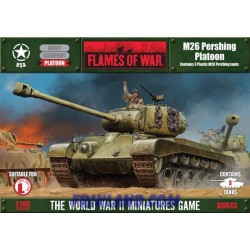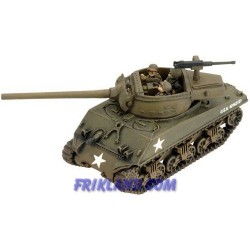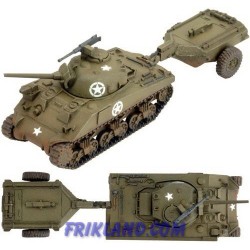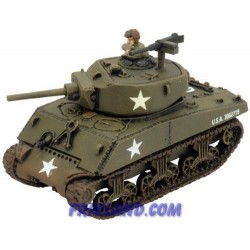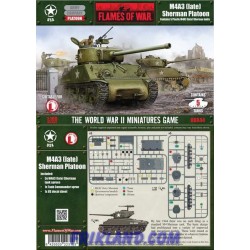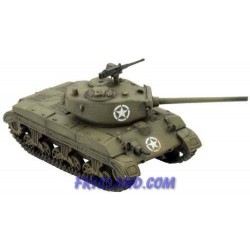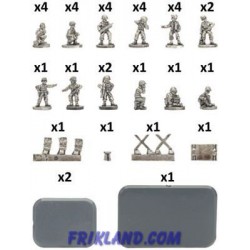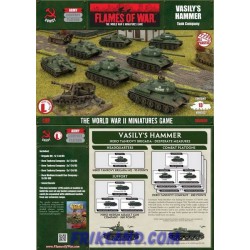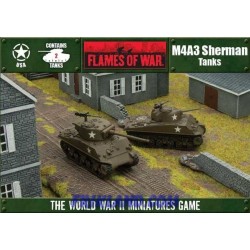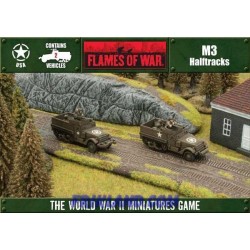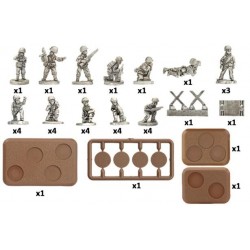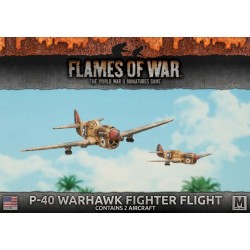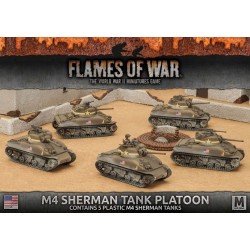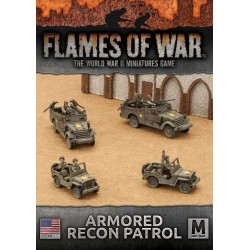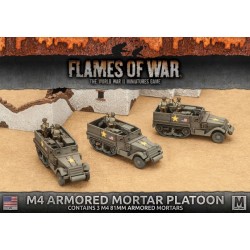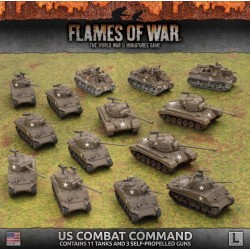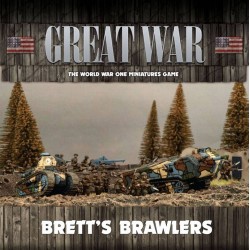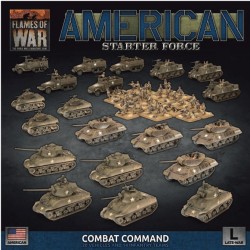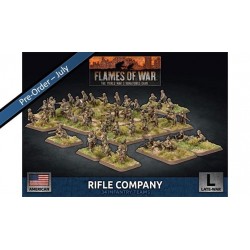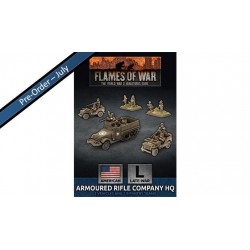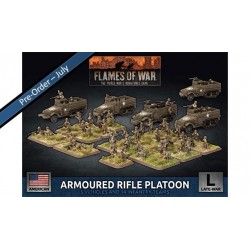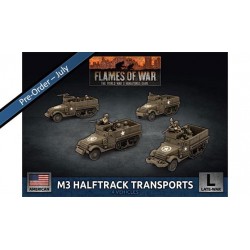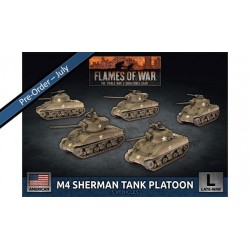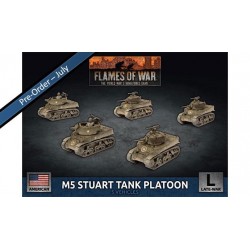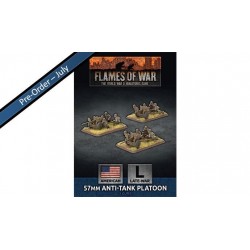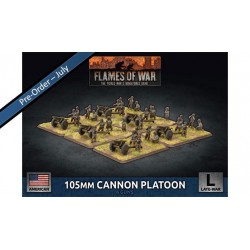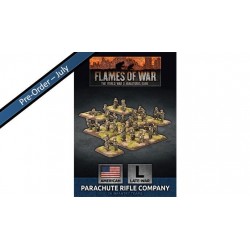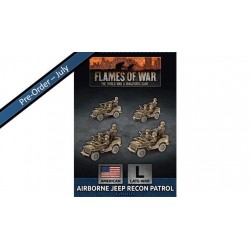Ningún producto
FoW - USA (cajas)
- Nuevos artículos
- Ofertas Especiales
- OUTLET
-
MDF Frikland
- Peanas
-
Cajas (juegos de cartas)
- Caja 1V Premium 1 carril
- Caja 2V Premium 2 carriles
- Caja 3V Premium 3 carriles
- Caja 4V Premium 4 carriles
- 5V Magna Box / Caja Magna (5 carriles)
- Caja 1H Premium 1 carril (horizontal)
- Caja 2H Premium 2 carril (horizontal)
- 4H Magna Box Landscape / Caja Magna Horizontal (4 carriles)
- Otras cajas
- Cajas Guarda Mazos
- Lorcana
- Insertos / Organizadores para Juegos
- Escenografía 28mm
- Escenografía 15mm
- Complementos para juegos
- Cajas Guarda Fotos
- Logotipos
- 3D Display
- Otras cajas
- Varios (mdf)
- Casas de muñecas
-
GAMES WORKSHOP
-
Age of Sigmar
- Básicos
- Libros y Manuales
- Broken Realms
- Bestias del Caos
- Bonereapers
- Caos
- Ciudades de Sigmar
- Condes Vampiro
- Daemons of Nurgle
- Demonios de Slaanesh
- Daughters of Khaine
- Gloomspite Gitz
- Greenskinz
- Fireslayer
- Flesh Eater (Necrófagos)
- Free peoples
- Idoneth Deepkin
- Kharadron Overlords
- Khorne Bloodbound
- Lumineth
- Malign Portents - Portentos Malignos
- NightHaunt
- Ogors
- Orruks
- Seraphon (hombres lagarto)
- Silvanos
- Slaves to Darkness
- Skaven
- Sons of Behemat
- Stormcast Eternals
- Soulblight Gravelords
- Tzeentch
- Escenografía
- Varios
-
Warhammer 40K
- Reglamentos
- Básicos (cajas y ejércitos)
- Apocalypse
- Adeptus Custodes
- Adeptus Mechanicus
- Adeptus Titánicus
- Aeldari (Eldars)
- Agentes Imperiales
- Ángeles Oscuros
- Ángeles Sangrientos
- Astra Militarum
- Battle of Sister
- Caballeros del Caos
- Caballeros Grises
- Caballeros Imperiales
- Caos (Marines Espaciales del Caos)
- Deathwatch
- Death Guard
- Demonios del Caos
- Drukhari
- Eldar Oscuros
- Genestealer Cult
- Harlequin
- Ligas de Votann
- Lobos Espaciales
- Necrones
- Marines Espaciales
- Mil hijos
- Orkos Espaciales
- Primaris
- Taus (Tau's Empire)
- Templarios Negros
- Tiránidos
- Ultramarines
- World Eaters
- Escenografía
- White Scars
- Varios
- The Old World
- La Herejía de Horus
- Warcry
- Kill Team
- Middle Earth Strategy Battle Game
- Underworlds
- Necromunda
- Citadel-
- Juegos
- Bloodbowl
- Warhammer Fantasy
- El Señor de los Anillos
- El Hobbit
- Revista White Dwarf
- Black Library
-
Age of Sigmar
- Mesas, estantes y organizadores
-
MINIATURAS
-
Flames of War
- FoW - Juego
- FoW - Reglamentos y libros
- FoW - Wargames Illustrated
- FoW - Japoneses
- FoW - Alemanes (cajas)
- FoW - Alemanes (blisters)
- FoW - USA (cajas)
- FoW - USA (blisters)
- FoW - UK (cajas)
- FoW - UK (blisters)
- FoW - Soviéticos (cajas)
- FoW - Soviéticos (blisters)
- FoW - Italianos (blisters)
- FoW - Franceses (cajas)
- FoW - Franceses (blisters)
- FoW - Polacos (Blisters)
- FoW - Húngaros
- FoW - Rumanos
- FoW - Finlandeses
- FoW - Griegos
- FoW - Escenografía
- FoW - Pinturas y Sprays
- FoW - Dados plantillas
- FoW - Especiales
- FoW - Polacos (cajas)
- FoW - Arab Israel War
- FoW - Great War
- FOW - Team Yankee
- FoW - Africa
- NAM/Tropic Lightning
-
Mantic Games
-
Kings of War
- KoW - Básicos
- KoW - No muertos
- KoW - Ogros
- KoW - Basileos (Humanos)
- KoW - Elfos Oscuros
- KoW - Orcos
- KoW - Enanos
- KoW - Enanos Abisales
- KoW - Elfos
- KoW - Mega Army
- KoW - Forces of the Abyss
- KoW - Forces of Nature
- KoW - Accesorios
- KoW - Salamanders
- KoW - Empire of Dust
- KoW - Goblins
- WP - Plague
- KoW - Trident Realm
- KoW - Forces of the Abyss
- KoW - Especiales
- Alianza del Norte
- Manuales Y Reglamentos
- KoW - Halflings
- Armada
- Vanguard
- DeadZone
- Dreadball
- Dungeon saga
- Star Saga
- The Walking Dead - All Out War
- Warpath
- Overdrive
- Firefight
-
Kings of War
- Knight Models
- 1650 - A capa y espada
- Ammo mig
- Bolt Action
- Dark Age
- Darky Angles Models
- Dropzone Commander
- Dust Tactics
- Frostgrave
- Euphoria Miniatures
- FireForge
- Freebooter
- GaleForce9
- GameZone
- Harry Potter (de Knight Models)
- Home Raiders
- Infinity The Game
- Juego de Tronos
- Knightmare Miniatures
- Juegorama
- Kensei
- Kromlech
- Malifaux / Wyrd Miniatures
- MOM Miniaturas
- Para Bellum
- Plastic Soldier
- Rage Resin Models
- Punkapocalyptic
- Relic Knights
- Resina Planet & Euphoria
- Ronin
- Song of Ice & Fire (inglés)
- Stalingrad: Infierno en el Volga
- Starfinder
- TANKS
- Tercio Creativo
- Torii
- V&V
- Wargames Atlantic
- Wild West Exodus
- Xyston Miniatures
- Yedharo
- Zenit Miniatures
- Zombicide
-
Flames of War
- Revistas
-
PINTURAS, PINCELES,...
-
Vallejo
- Xpress Color
- Set Pintura VJ
- Pinceles VJ
- Model Color
- Game Color 2022
- Game Color
- Panzer Aces
- Lavados / Model Wash
- Model Air
- Game Air
- Aerógrafos y auxiliares
- Pigmentos
- Sprays & Imprimación
- Metal Color
- Premium Color
- Weathering effects
- Auxiliares
- AFV painting sistem
- revistas
- Barniz
- Texturas
- Herramientas
- Otras Pinturas
- The Army Painter
-
AMMO de Mig Jiménez
- Revista-AMMO
- Libro-AMMO
- Sets de pintura-AMMO
- Pigmentos-AMMO
- Imprimaciones-AMMO
- Productos auxiliares-AMMO
- Efectos en esmalte-AMMO
- Efectos de escurrido en esmalte-AMMO
- Lavados en esmalte-AMMO
- Barnices-AMMO
- Pinturas Acrílicas-AMMO
- Weathering Sets-AMMO
- Pinturas metalicas AMMO
- Lavados para paneles
- Texturas - AMMO
- Oilbrushers
- Pinceles
- Aerografo-AMMO
- Pinturas metalicas alclad 2-AMMO
- Shaders
- Streaking Brushers
- Lavados Acrílicos
- Filtros-AMMO
- AK Interactive
- RedGrass
- Winson & Newton
-
Vallejo
-
ESCENOGRAFIA
- Escenografía MDF Frikland
- AMMO de Mig Jiménez
-
Bandua
- BN - Designed for Infinity
- BN - Varios
- BN - Escenografia 15mm
- BN - Cajas de Dados
- BN - Accesorios de Pintura
- BN - Tokens
- BN - Designed for KoW
- BN - Peanas 25mm
- BN - Peanas 32mm
- BN - Peanas 40mm
- BN - Peanas 50mm
- BN - Peanas 60mm
- BN - Peanas 55mm
- BN - Peanas Varias
- BN - Ages of Saga
- BN - Ready for Battle
- BN - Módulos Fidalgo
- Gamer`s Grass
- Gale Force 9
- Mantic Terrain Crate
-
Micro Art Studio
- MAS - Bases Cuadradas
- MAS - Bases Redondas
- MAS - Bases Redondas con reborde
- MAS - Bandejas de Movimiento
- MAS - Designed for Infinity
- MAS - Miniaturas de Mundodisco
- MAS - Miniaturas de 28mm
- MAS - Miniaturas de Wolsung
- MAS - Miniaturas de 70mm
- MAS - Escenografia de resina
- MAS - Escenografia de foam
- MAS - Escenografia de HDF
- MAS - Accesorios
- MAS - Rubber Molds
- MAS - Conversion Lab
- Escenografía MAS
- Varios MAS
- Bases Cuadradas MAS
- Miniaturas 28mm MAS
- Bases Redondas MAS
- Mystical World
- Pablo el Marqués
- Plast Craft Games
- Wargfield
- Resina Planet
- Ziterdes
- Vallejo
- Complementos
- Magic The Gathering
-
Juegos de Mesa
- Arkham Horror LCG
- asmodee
- Battlelore
- Cartas
- Catán
- Carcassonne
- Descent
- Devir
- Diversión y Fiesta
- Diset
- Draco Ideas
- Estrategia
- Doctor Who
- familiares
- Fundas para cartas
- Importación
- Juegos de Dados
- Juegos en Ingles
- Journey: La ira de los demonios
- Legado perdido
- Para 2 jugadores
- Rail Raiders Infinite
- Pandemic
- Runewars
- Señor de los Anillos
- Star Trek: Ascendancy
- Star Wars Imperial Assault
- Star Wars X-Wing
- Star Wars: Armada
- Tablero
- Varios
- Way of Fighter
- Zombies
- Viajes por la Tierra Media
- Juegos de Rol
- Merchandising
- Libros
- FrikStore
Productos más vistos
-

LCVP (3x landing...
Descatalogado
Novedades
-

Hucha "Ahorra Dinero"
6,00 € -

-

-

PATRULLA: IMPERIO TAU
100,00 €
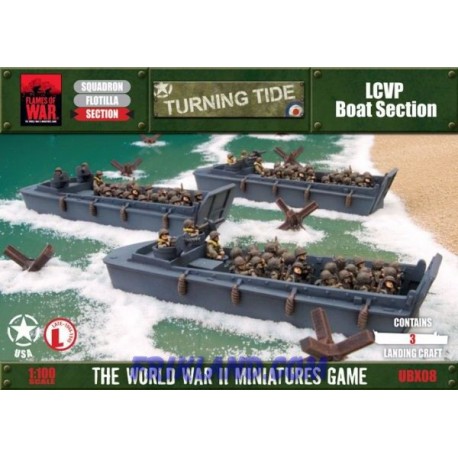 Ver más grande
Ver más grande
LCVP (3x landing crafts) Limited Edition
FOW-UBX08
Nuevo producto
Descatalogado
Más
with 3x Landing Craft, 3x sets of Landing Craft crew & 3x Mounted 24-man Boat Sections.
The Dieppe raid in 1942 taught the Allies many lessons on invading beaches while under fire. Later, after the successes in North Africa, Sicily and Italy the Allies felt they were ready to take on Fortress Europa. Careful study of the defences along the coast showed them there were weaknesses inherent in its structure, and, if the men had the right equipment and training, exploiting those weaknesses was possible. Any invading force would have to overcome wire, minefields, and bunkers if it was to be successful. Thus the planners set about to create the perfect mix of men, equipment and training.
The US Army now embarked on a program of reorganising and training the infantry formations that would assault the beaches. After careful study, an organisation began to take shape in the minds of the planners. Starting with the basic infantry company of three combat platoons and one weapons platoon, the force designers sought to create multiple independent organisations.
This organisation had to be able to act on its own without further company level support. Furthermore, it had to be able to fight its way through wire obstacles, overcome enemy infantry and destroy enemy bunkers.
However, the most important restriction was the size of the landing craft, which could only hold 31 men in full ‘battle rattle’. With a standard US infantry platoon being just over 40 individuals it was necessary to change the structure of the platoons to fit in the small boats that would take them to the beach. Thus, the first change was to go from the four large platoons in a normal infantry company to six smaller boat sections in an assault company.
In order to deal with all of the expected defences, the planners loaded the boat sections up with weapons and equipment. They gave them mortars from the weapons platoon to knock out machine-gun nests, bazookas from the company HQ to take on tanks, and flame-throwers from the Chemical Branch to silence bunkers.
For barbed wire, they gave them Bangalore torpedoes, long pipes filled with explosives to blow gaps for the troops. To finish off bunkers, they had demolition charges, plenty of good old TNT to blow things up. There was no quick fix for minefields though—they simply had to take their chances there.
The men of the boat sections not only needed the weaponry to deal with the defences and defenders, but they also needed to carry enough supplies and combat gear for three days on their back.
Since a soldier can only carry 70lbs/32kg (at most), working out what to take and what to leave behind was tricky. The planners solved the problem with a ‘belt and braces’ approach and loaded the assault troops up to the limit. Part of their solution was the assault vest with pockets for much of the extra equipment.
Even with equipment, an organisation is incapable of acting without training on that equipment. For months before D-Day, the assault regiments practised their craft. Mastering the use of explosives, they became proficient at advancing under fire against a stubborn well-entrenched enemy.
Integrating the use of the weapon systems and the new skills they had learned, the infantry platoons became masters of combined arms manoeuvre at the lowest levels.
With integrated heavy weapons at the platoon level, they were able to suppress the enemy while parts of the unit manoeuvred to a position of advantage with which to launch an assault.
Designed by Evan Allen
Painted by Jeremey Painter
Reseñas
No hay reseñas de clientes en este momento.




